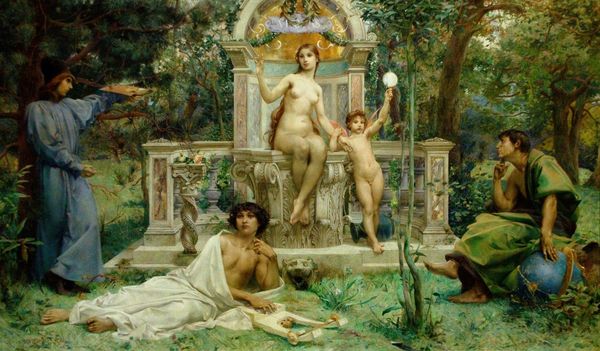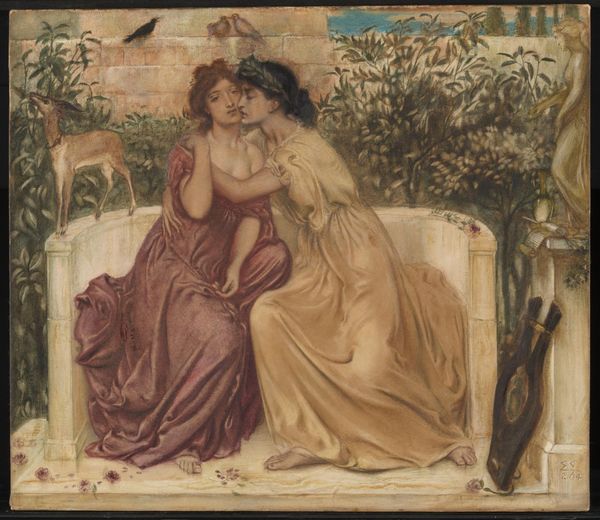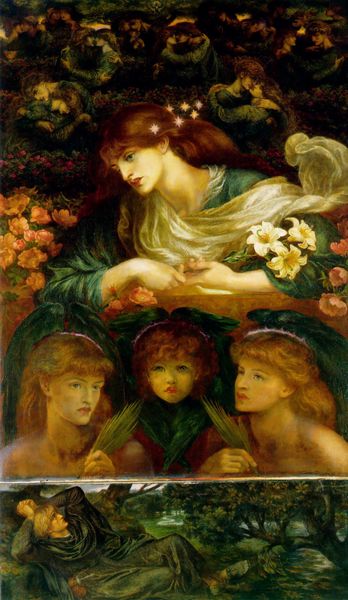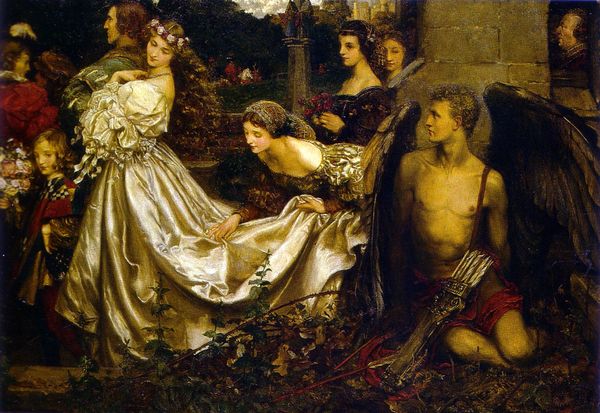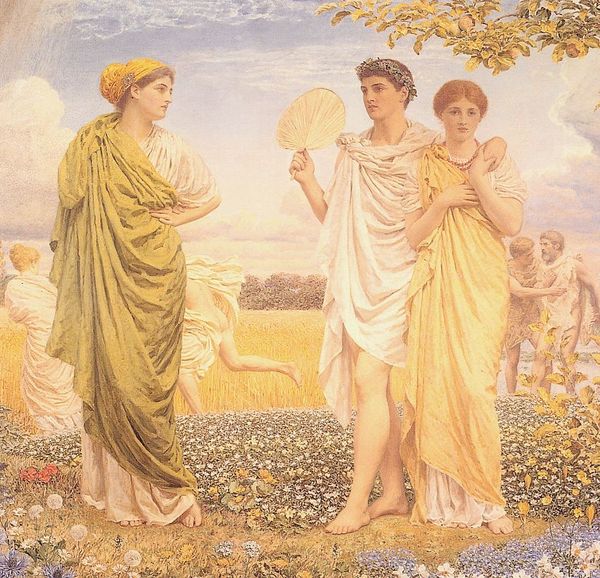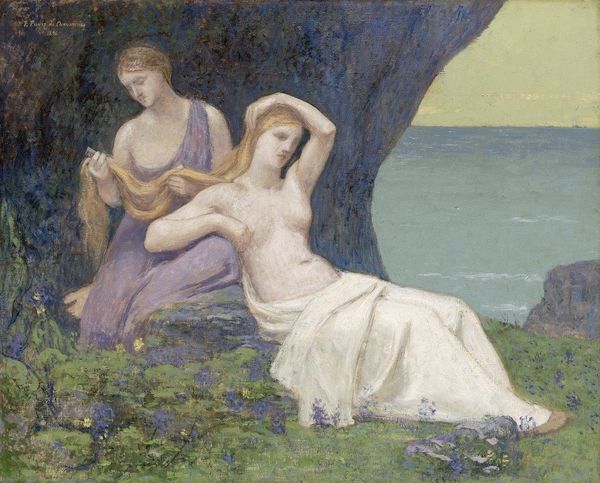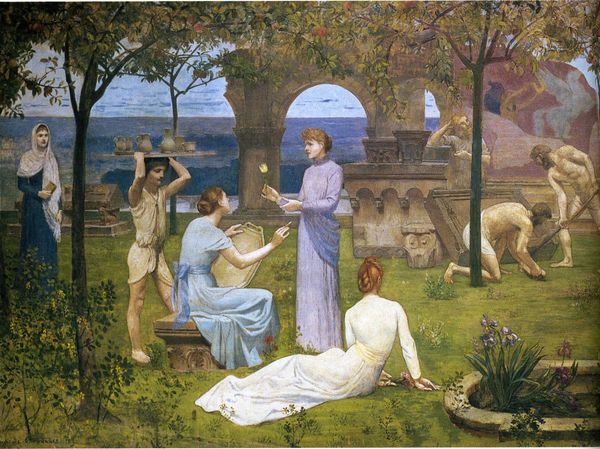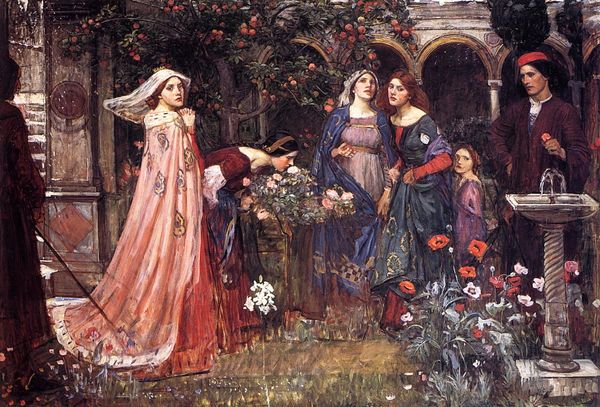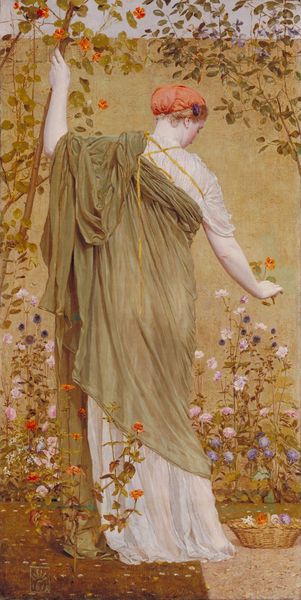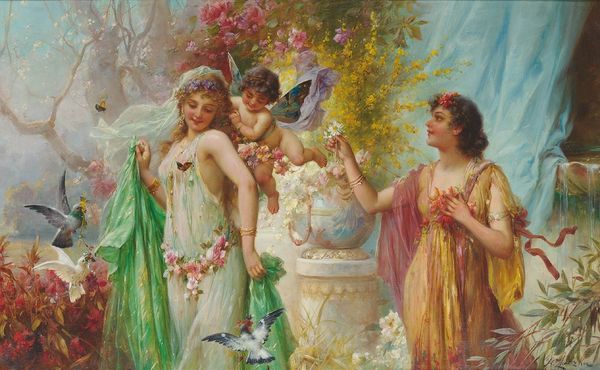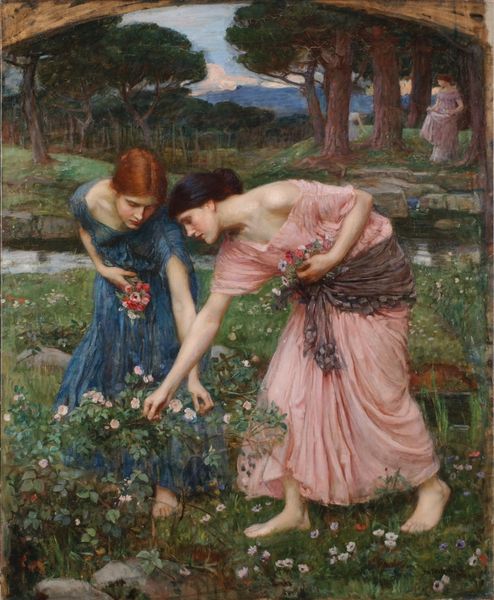
A Masque for the Four Seasons 1909
0:00
0:00
waltercrane
Hessisches Landesmuseum Darmstadt, Darmstadt, Germany
painting, gouache
#
portrait
#
gouache
#
allegories
#
allegory
#
symbol
#
painting
#
gouache
#
landscape
#
figuration
#
text
#
handmade artwork painting
#
mythology
#
painting painterly
#
symbolism
#
genre-painting
#
history-painting
Copyright: Public domain
Curator: Walter Crane painted this allegorical work titled "A Masque for the Four Seasons" in 1909. Editor: Immediately striking. It feels both vibrant and melancholic, especially in the rendering of each figure’s flowing gown which blends almost seamlessly into the stylized background. You can really see how gouache helps achieve the luminosity in those fabrics. Curator: The piece aligns perfectly with Crane's aesthetic, deeply rooted in the Arts and Crafts movement. Allegories were a common way of conveying complex moral and social ideas at the time. Consider the historical context: urbanization, industrialization – a longing for an idealized past, perhaps. Editor: Absolutely. It’s interesting to consider the choice of gouache. It allows for reworking but lacks the perceived prestige of oil. Was this a deliberate choice? Crane would’ve known about materiality; perhaps a connection with artisanal practices hearkening back to pre-industrial artistic making. The texture adds to that dreamlike effect, almost like stage design. Curator: Certainly. Crane designed sets and costumes, blurring art and life. He presented socialist ideals through this, engaging audiences through accessible symbolism, even didacticism. The symbolism of seasons isn't subtle but functions powerfully. Editor: I agree, this is less about individual skill than communicating shared visual languages, that the hand, craft and material support are essential to this transmission of messages. Notice each figure bearing the season's attribute—wreaths for Spring, flowers for Summer...but also the heavy drape enveloping winter; the almost obscured figure and an old man beneath in shadow; it evokes closure and inevitability. How does one then resist? Curator: The point isn’t resistance but understanding life's cycle as progress, I think. Crane sought to influence social consciousness. Didactic, perhaps, but effective for his context and aims. This painting isn’t solely about aesthetics but about communicating and circulating accessible narratives to the masses. Editor: Understood. Seeing the cyclical depiction like this does allow us to see what is constant through material transformations...food production, climate control and labor, all visualized in one frame. Fascinating! Curator: Indeed, examining "A Masque" illuminates not only Crane’s art but also the broader historical currents that shaped his vision. Editor: And for me, this piece now offers a great entry point for considering labor involved in the creation and cultural context in viewing any work of art.
Comments
No comments
Be the first to comment and join the conversation on the ultimate creative platform.

